With key Jain sangathans taking a legacy Mumbai auction house to court for inviting bids on legally-acquired antiquities, mid-day dives into the debate. Does religious art belong in the hands of collectors and museums, or should it be handed over to the community for whom it’s sacred?
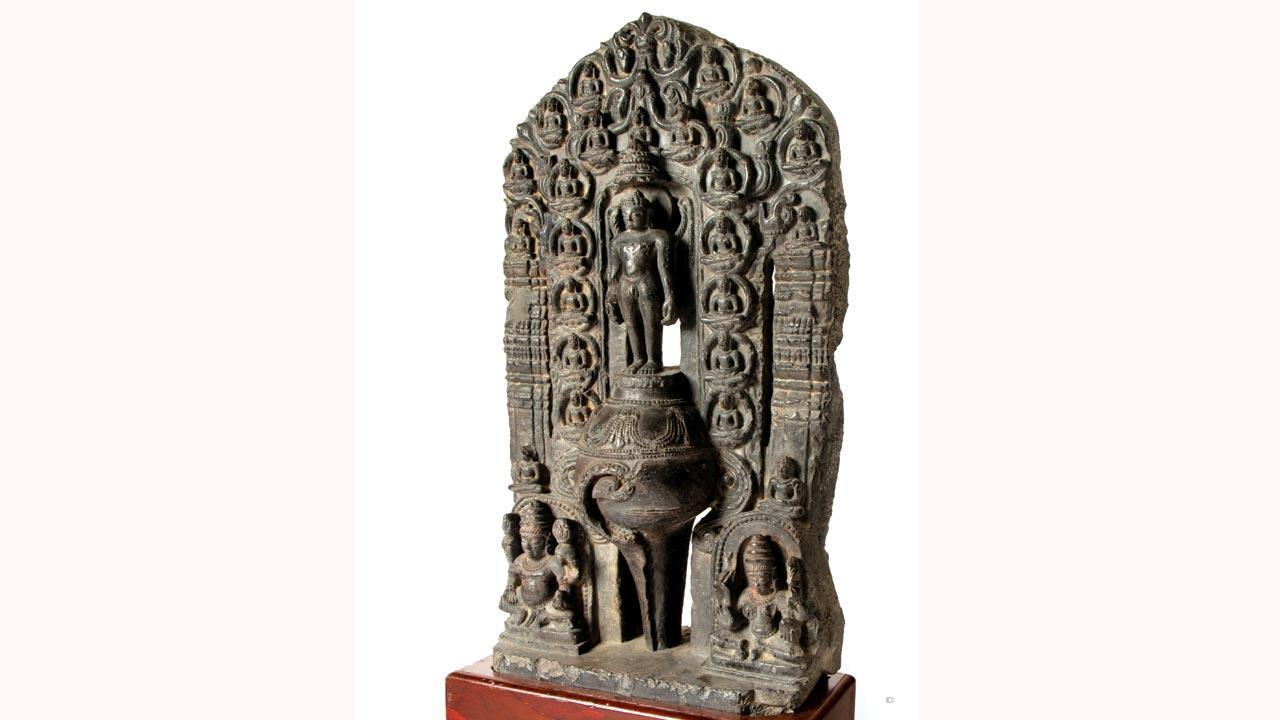
A black stone stele depicting Neminath, the 22nd Jain Tirthankara, standing on a giant bejeweled conch, surrounded by figures of the other 23 Tirthankaras. This was among 17 coveted idols or shrines offered for auction earlier this month by Todywalla, which were withdrawn after the Jain community went to court. Pics Courtesy/Classical Indian Art Auction 3 Catalogue
Atop a lion throne, at the centre of a nearly foot-tall bronze shrine, sits Ajinath—the second Tirthankara in Jain faith. Surrounding him are smaller, ornate figures of the other 23 Tirthankaras. Rich with details and inscriptions, it is predicted that the silver inlaid shrine was fashioned by master craftsmen in the 16th century. It was priced at a princely sum of Rs 4 lakh.
This shrine, and 16 other pieces of art—all depicting facets of Jainism—were part of a catalogue for the Classical Indian Art Auction 3 by Todywalla Auctions, a Girguam-based institution established in 1964, now a leading name in the field.
ADVERTISEMENT
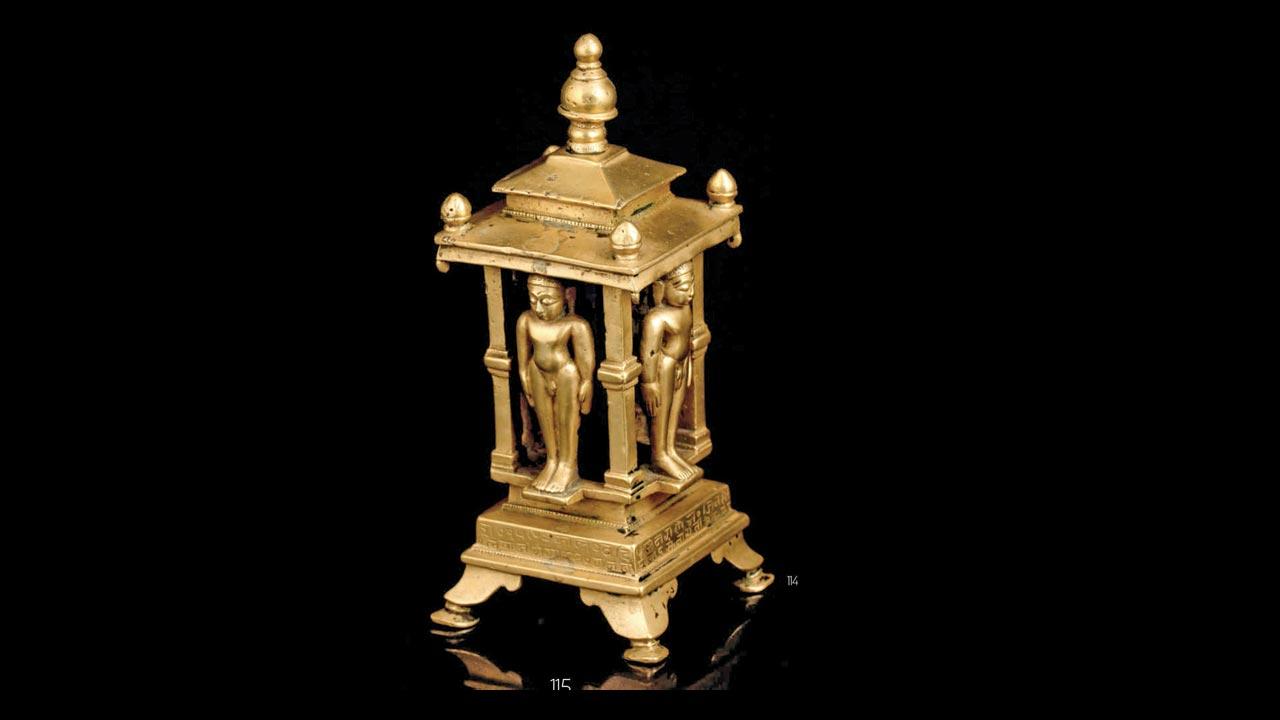 A brass Jain Chaturmukha shrine from the Western Deccan, dated 1530 BC, representing the Nandisvara island where, according to Jainism, the Gods celebrate sacred festivals. It depicts a Digambar Tirthankara figure on each side
A brass Jain Chaturmukha shrine from the Western Deccan, dated 1530 BC, representing the Nandisvara island where, according to Jainism, the Gods celebrate sacred festivals. It depicts a Digambar Tirthankara figure on each side
No one could have predicted what happened next, between the announcement of the auction and the swinging of the Todywalla gavel on April 16: The catalogue had the Jain community in Mumbai, other parts of Maharashtra and Delhi up in arms; they took umbrage to the commercialisation of their religious idols. The Todywallas were made aware of their ire, as was the Mumbai police. A Public Interest Litigation was filed before the Bombay High Court, and a division bench stayed the auction of the antiquities in question. The Classical Indian Art sale took place as planned, but conspicuously absent were 17 Jain idols and shrines, whose collective worth is estimated to be Rs 94.5 lakh.
As the Todywalla sons confer with the Jain community over a round of meetings, a new debate is fired up: Do religious art and antiquities belong in the hands and houses of private collectors and the halls of auction houses, or should they be handed over to the community for whom they are sacred? Experts from the worlds of art, law, museology and history tell mid-day that there are no ready answers, and certainly no consensus on the matter.
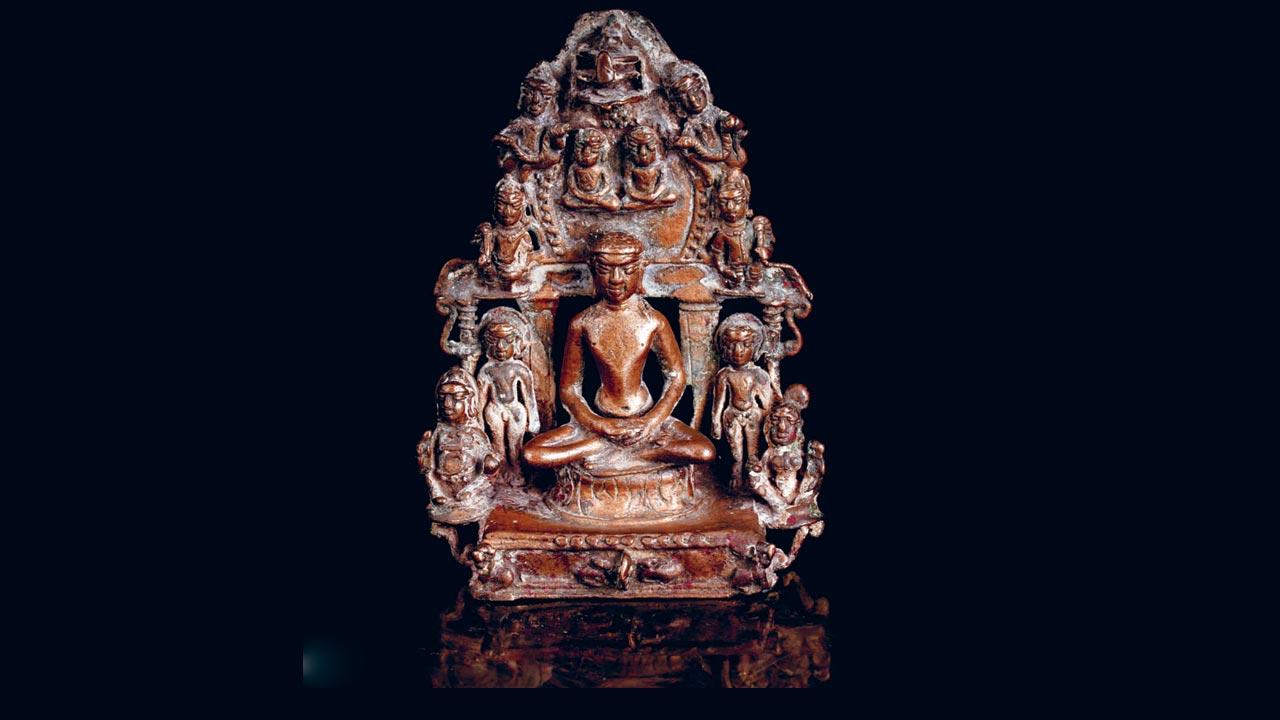 An early Jain bronze shrine from Gujarat, dating back to the seventh or eighth century, with the central figure of a Jain Tirthankara. This and 16 other antiquities depicting Jain deities were earlier put up for auction by Todywalla Auctions, but withdrawn after outrage from the Jain community followed by a stay by the Bombay High Court. Pics Courtesy/Classical Indian Art Auction 3 Catalogue
An early Jain bronze shrine from Gujarat, dating back to the seventh or eighth century, with the central figure of a Jain Tirthankara. This and 16 other antiquities depicting Jain deities were earlier put up for auction by Todywalla Auctions, but withdrawn after outrage from the Jain community followed by a stay by the Bombay High Court. Pics Courtesy/Classical Indian Art Auction 3 Catalogue
The Jain idols that were to be auctioned by the Todywallas were sourced from various parts of the world. Consider a black stone stele depicting Neminath, the 22nd Tirthankara, priced at R20-30 lakh. The stele is from the collection of Belgium’s Rene Roveroux—acquired by the Roveroux family in the 1960s and then passed down the generations. The Vishwa Jain Sangathan, one of the organisations opposing the auction, is seeking information about the source and provenance of each idol, and how they ended up in “foreign hands” in the first place.
The Sangathan, and other organisations like it, have a seemingly simple demand: Turn over the antiquities to the community, so that they can be worshipped by all. “These are idols that we revere and worship. We are used to seeing these deities in our temples, and bowing down to them. To see them being sold in an auction is demeaning,” says Sanjay Kumar Jain, national president of the Sangathan. The community’s first meeting with the Todywallas, at Kalbadevi’s Digambar Jain temple, also featured the Digamdar Jain Global Mahasabha and monk Acharya Pushpadant Sagarji.
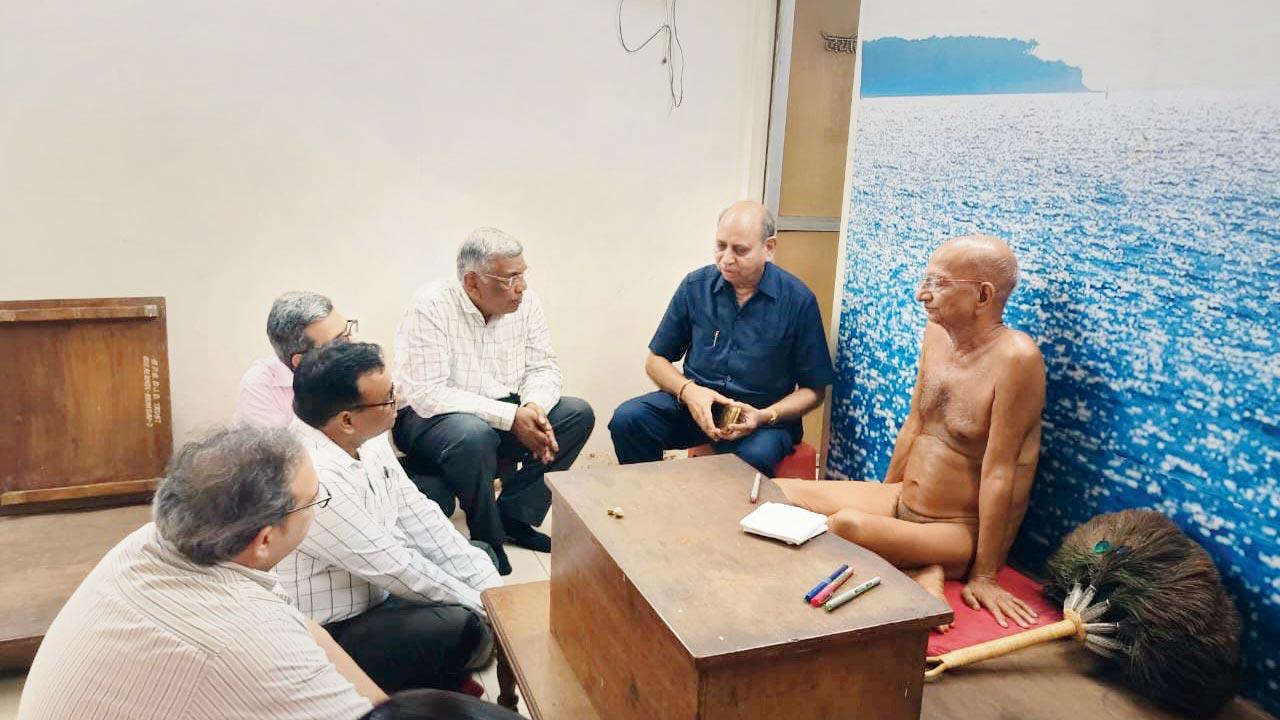 The Todywalla sons had a meeting with leaders and members of the Jain community earlier this month to discuss the community’s concerns. More meetings are expected later this month
The Todywalla sons had a meeting with leaders and members of the Jain community earlier this month to discuss the community’s concerns. More meetings are expected later this month
The auction house has told the Sangathan that the purchase of the antiquities was legal. “However, the Antiquities and Art Treasures Act (1972) mandates that any religious antiquity, if brought into India, needs to be registered with the government. We need to know if this was done, and we also need to know how and when these antiquities were taken out of India,” Jain urges. The next meeting with the auction house is scheduled for April 22, when the community will put forth its demand for the handover of the idols, and when the Todywallas are expected to disclose necessary documentation.
Debottam Bose, a practising Supreme Court lawyer who specialises in art, narrates a neat story: A year before the Antiquities and Art Treasures Act, 1972 was passed, American collector Norton Simon came to India on a honeymoon. He fell in love with India and took home some art objects.
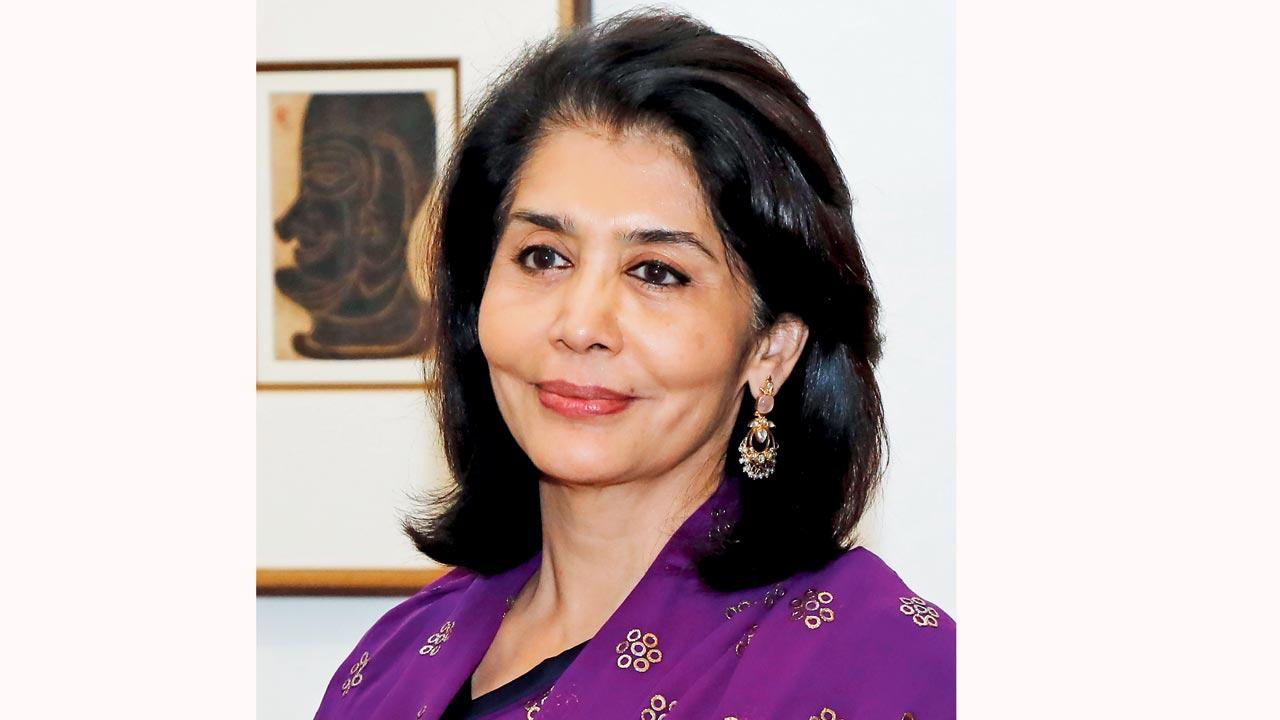 Tasneem Zakaria Mehta, Director, Dr Bhau Daji Lad Museum
Tasneem Zakaria Mehta, Director, Dr Bhau Daji Lad Museum
“A lot of antiquities, religious or otherwise, that are in possession of foreigners or foreign museums today were taken home as mementoes decades ago,” says Bose, “Before 1972, the movement of art objects across international borders were freer.” Currently, the law makes it adequately clear that any art object over 100 years old cannot be taken out of India.
When it comes to repatriation of art or antiquities into the country, the law mandates that this be done by the Government of India, or by a museum on behalf of the government. Art galleries or auction houses, if they have the opportunity, also need to bring art and antiquities into India on behalf of a charity, a trust or the government, while informing bodies like the Archeological Survey of India and following the rules as specific in the Antiquities Act.

Amit Kumar Jain, an independent art and culture manager, warns that works which have found their way into overseas collections after the introduction of the Act point to instances of illegal trade and smuggling, “which in recent years have caught the eyes of the Government of India and are being traced to the best of their means.”
Jain is of the opinion that there are two sides to the argument—both of which are valid. “It ultimately comes down to commercial [concerns] versus emotional [ones],” says Jain. “If a private collector has bought art in good faith, I don’t see why their home would not be a good place for it. On the other hand, if a community wants to take possession of it, they should be able to provide evidence to the fact that they can take good care of it. It is a grey area for sure.”
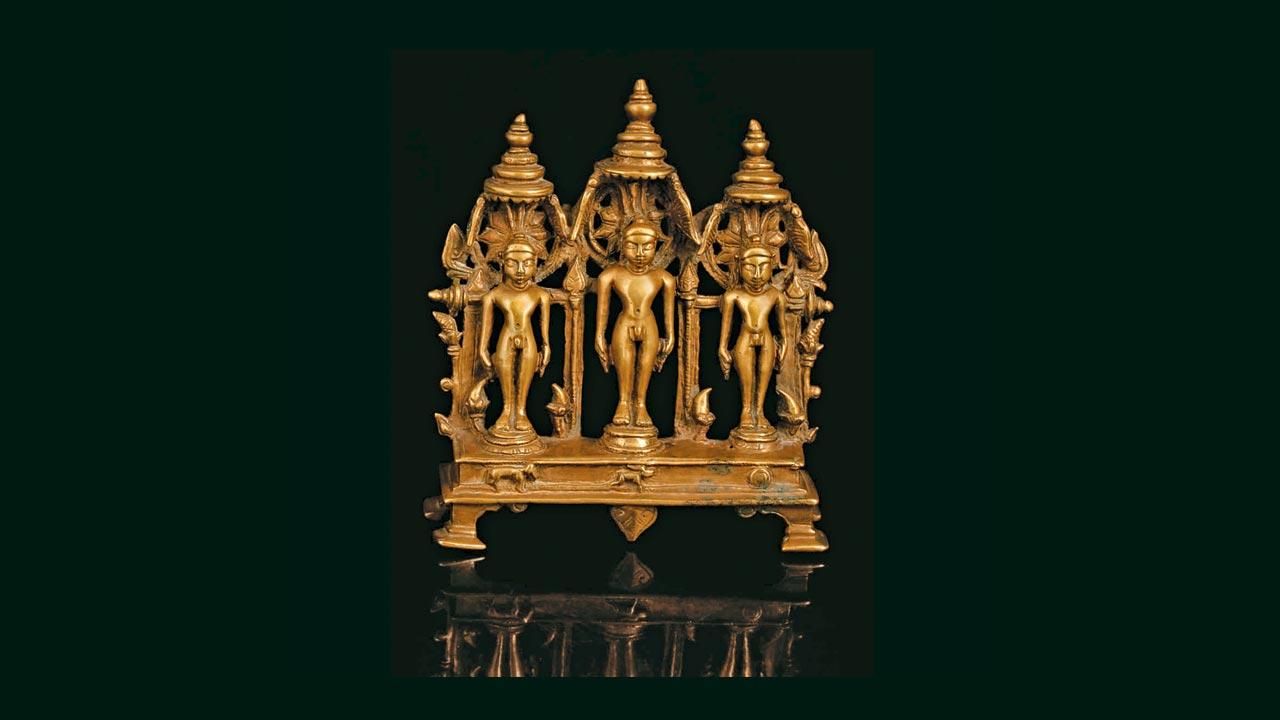 A Jain brass Tritirtha (triad of Tirthankaras) from Western India dated 1455 BC
A Jain brass Tritirtha (triad of Tirthankaras) from Western India dated 1455 BC
Some antiquities owned by expats made their way into museums, while others came up for trade. A beneficiary of the latter is Dr Siddharth Bhansali, a Mumbai native who is now based in New Orleans. He first acquired a bronze Jain antiquity around 35 years ago at an auction. Presently, his collection houses close to 100 bronzes depicting Jain—his own faith—as well as Hindu and Buddhist deities.
The specialist in Internal Medicine and Cardiology frequently loans his enviable collection to American art galleries. It includes Gupta bronzes of Jain deities from the third and fourth century, a sixth century metal icon of Lord Ganesh, early idols of Goddess Ambika from Eastern India and a large number of bronzes from Kerala.
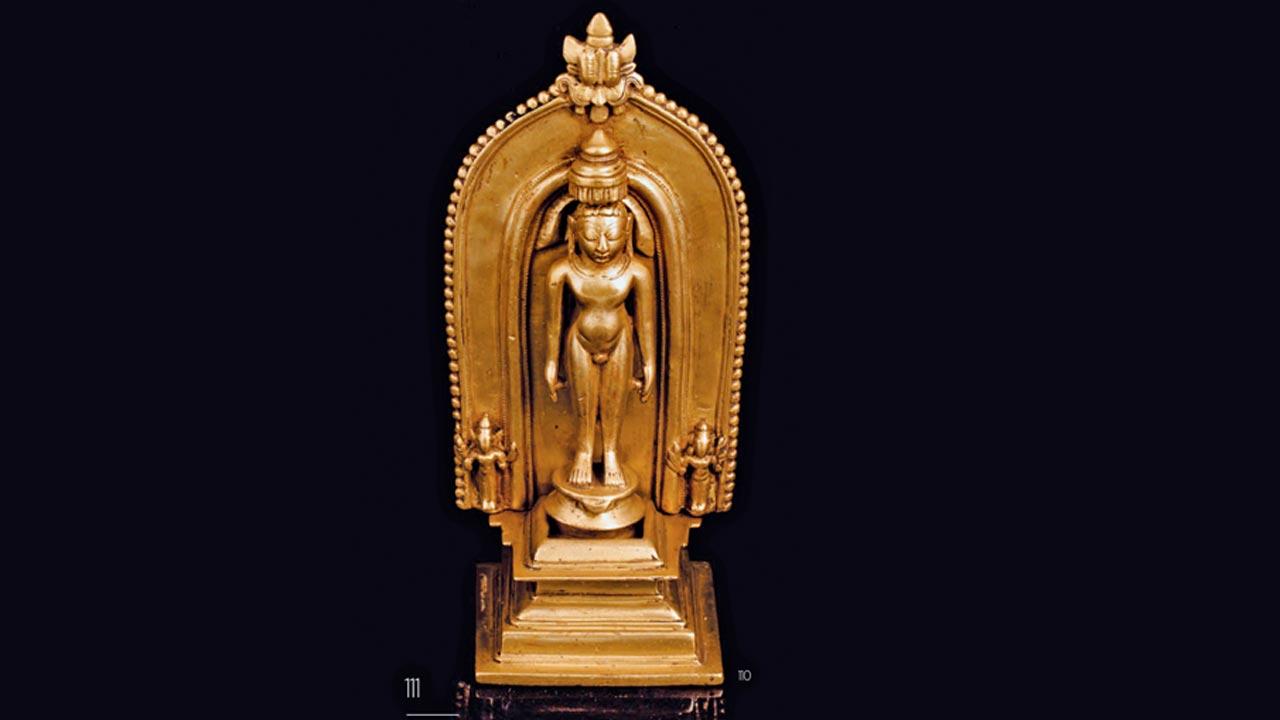 A Jain bronze shrine depicting Chandraprabha, the eighth Tirthankara, believed to be from the 16th or 17th century
A Jain bronze shrine depicting Chandraprabha, the eighth Tirthankara, believed to be from the 16th or 17th century
“If you were to ask me,” Bhansali tells mid-day, “I am living proof that private collectors can take good care of art, religious or otherwise. I have art that is steeped in various faiths, I have travelled far and wide to collect it and have educated myself on how best to care for it.” He adds that religious art needs to be looked from two lenses—that of faith, and aesthetic appreciation.
The phenomenon of communities opposing auctions of art that is representative of their culture or history is not limited to India. Earlier this year, the David Nolan Gallery in New York hosted an exhibition featuring drawings from Native American ledgers, which included over 100 works on paper by artists from the Arapaho, Cheyenne, Hidatsa, Kiowa, and Lakota tribes. Prominently featured were the works of two of the 72 Native Americans who were imprisoned in the late 1980s after the Red River War.
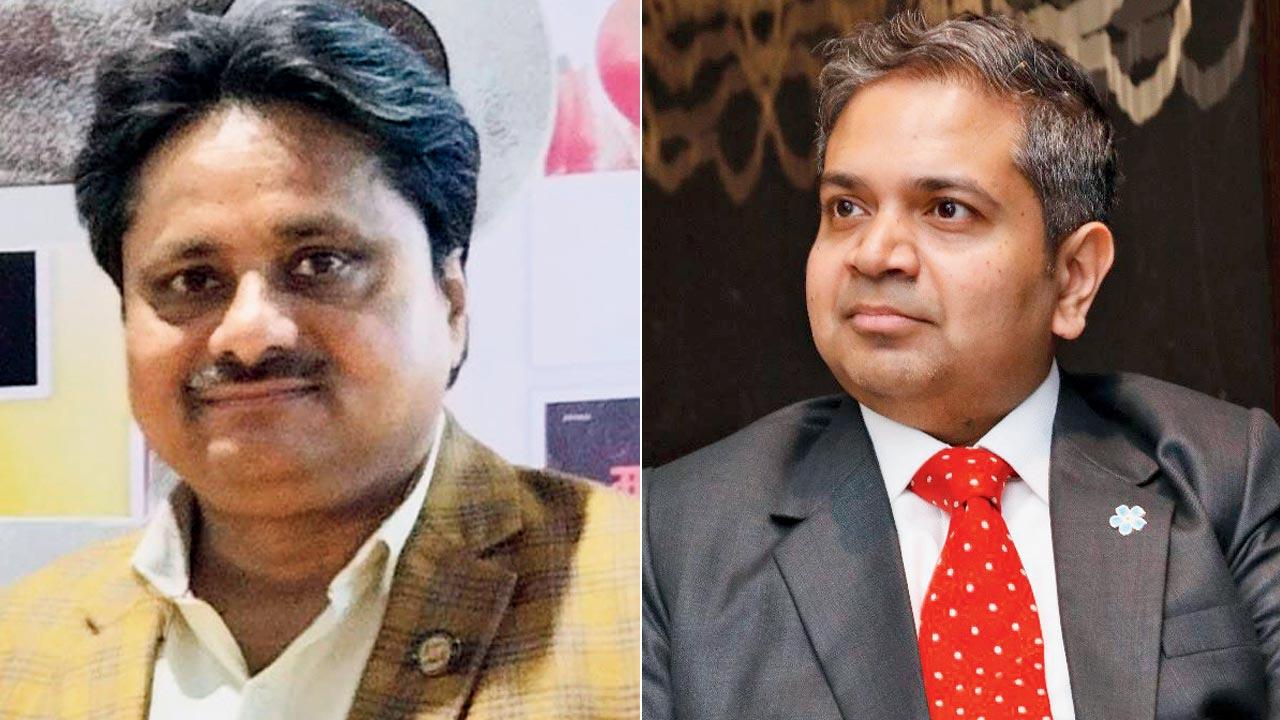 Sanjay Jain and Debottam Bose
Sanjay Jain and Debottam Bose
Shortly thereafter, it was revealed that three of the ledger books, which were the source of some of these drawings, had been auctioned off in 2022 and were on loan from the buyer in the 2024 exhibition. At the time, members of some tribes tried to stop the auction, but in vain. The same drawings were also put on display at the Expo Chicago, this time by art dealer Donald Ellis, who confirmed to an independent art news portal that he had bought all the three books. The revelation, again, elicited outrage and sadness from the native tribes.
Tasneem Mehta Zakaria, Managing Trustee and Director of the Dr Bhau Daji Lad Museum, sides with the communities when it comes to religious art. “Any religious antiquities in the private domain are probably inherited, like in the erstwhile royal families. If the community feels strongly that an idol has illegally or otherwise been appropriated or acquired, then it must be returned to the community. As far as I understand, the community always takes precedence. That’s why London’s Victoria and Albert Museum and New York’s Metropolitan Museum of Art have returned the Benin bronzes, albeit with conditions,” she says.
The V&A Museum and MOMA are two among numerous institutions said to have acquired Benin Bronzes—thousands of figurines, tusks and sculptures allegedly looted by British troops and dispersed all over the world from the kingdom of Benin, now Nigeria, in 1897. In his 2020 book, The Brutish Museums: The Benin Bronzes, Colonial Violence and Cultural Restitution, scholar Dan Hicks compiled a list of 161 institutions that have acquired Benin Bronzes by various means.
Mehta adds that the provenance of the objects takes precedence over its care. “For museums as well as private collectors, the provenance and method of acquisition of an object is most important. If a religious object or any object was acquired through dubious means, then it must be repatriated,” she says. “I think the question of care, offered as a reason to hold on to objects acquired without proper due diligence, is an arrogant assumption. We can certainly take better care of our objects in museums, but that does not justify others—to whom it does not belong—holding on to it.”
Bose recommends looking at the matter on a case to case basis. “In the case of the Jain community specifically,” he says, “they have a history of celebrating their art and culture, and they also have the resources to do so. This is apparent in the intricate carvings and artworks in their temples and the idols of their deities. One can certainly make the argument that they are better equipped to take care of them. Similarly, communities like the Sikhs, Parsis and Bengalis are known to make it a point to showcase not just their art but also their culture. And they have this spirit of community that pushes them to bring everyone together for the cause.”
But, he adds, the argument in favour of museums, too, is an equally strong one. “Mumbai is a great example when it comes to this,” says the law veteran. “The Chhatrapati Shivaji Maharaj Vastu Sangrahalaya, for instance, has a beautiful collection that everybody, including school students, gets to view and learn from. They also have the Museum Bus, an actual bus that goes to villages and educates the locals about our rich cultural heritage, in their local languages. As long as the custodians are doing a good job, we needn’t worry.”
94.5L
Collective worth of controversial Jain antiquities in the Todywalla auction
What The Law Says
. The Antiquities and Art Treasures Act, 1972 was passed in accordance with the UNESCO 1970 Convention to regulate the internal and external dealing in antiquities in India
. The Act prohibits the export of antiquities and art treasures unless it is done under a valid licence issued by the government
. Under the act, any antiquities that are more than 100 years old can not be exported, while “national treasures” is a term assigned to works by specific artists mentioned in the Act
. For import of antiquities, the Act requires that the Government of India be informed about the same and has a lengthy procedure to be completed before the
concerned art or antiquities can be repatriated to the country
The Sangathan, and other organi-sations like it, have a seemingly simple demand: Turn over the antiquities to the community, so that they can be worshipped by all
 Subscribe today by clicking the link and stay updated with the latest news!" Click here!
Subscribe today by clicking the link and stay updated with the latest news!" Click here!








